Brian Meert's Blog, page 129
February 8, 2018
Businesses Can Now Schedule Instagram Posts Using Hootsuite
 February 9, 2018
February 9, 2018Anna Hubbel

For those businesses frustrated with the inability to schedule Instagram posts, there is good news. According to Social Media Today, Facebook made some changes to Instagram’s graph API, allowing businesses to schedule posts using third-party tools such as Hootsuite.
Businesses can now schedule @Instagram posts through third-party tools. #businessprofiles #instagramupdates
Click To Tweet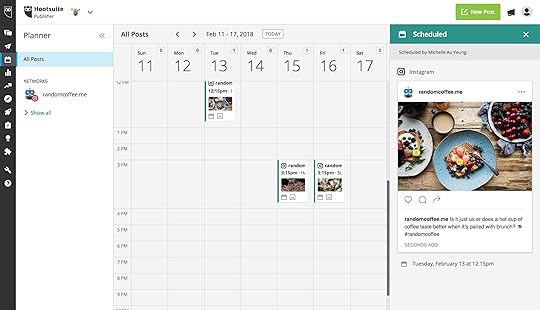 Photo Courtesy of SocialMediaToday
Photo Courtesy of SocialMediaToday
Previously, while businesses could schedule Tweets and Facebook content to automatically post, they could only receive a notification reminder to manually post content on Instagram.
“Last year, we began the process of updating the Instagram API to the Instagram Graph API, built on the Facebook Graph API,” Instagram explains in its announcement. “This change helps businesses manage their organic presence more effectively. Today, we’re introducing new features to the API, such as allowing businesses to schedule posts, view posts they’ve been tagged in, and view other business profiles.”
Social Media Today says scheduling Instagram posts has been third-party platform and Instagram partner Hootsuite’s most requested feature update.
At this time, it is unclear how this update will affect current scheduling tools for Instagram. The ability for non-business profiles to schedule Instagram posts will be introduced sometime next year.
Other API Updates
Instagram’s API has two additional updates for business profiles, says Social Media Today. One involves Business Discovery, which allows businesses to discover other business’s profile information and media. The other, Mentions, allows a business to view and comment on public media that users have tagged or mentioned that business in.
As Instagram continues to become more business friendly, with 25 million business profiles, these recent updates will help foster e-commerce connections initiated through the platform.
Having the ability to schedule content to post automatically at specified times throughout the week, businesses can dedicate more time to networking and developing relationships with influencers to further market their products or brand.
The post Businesses Can Now Schedule Instagram Posts Using Hootsuite appeared first on AdvertiseMint.
February 7, 2018
5 Insights about How Consumers Use Mobile to Shop
 February 8, 2018
February 8, 2018Anna Hubbel

Wherever there’s a consumer, it’s safe to assume there’s a mobile device. And wherever there’s a mobile device, there are going to be limitless social media interactions that influence online purchases.
A @Facebook study revealed 5 insights about mobile's influence on consumer purchase decisions. #socialconnections #mobilesocial
Click To Tweet
Facebook IQ conducted studies across various business types to discover insights about mobile’s influences on consumer purchase decisions and social interactions with businesses and brands. Here are the five insights that Facebook uncovered.
1. Instagram Promotes a Sense of Community
Instagram’s platform fosters online communities, making meaningful and spontaneous connections. As a mobile platform, Instagram is widely used by consumers and, therefore, is a strong venue for businesses to take part in those connections.
2. Consumers Use Messenger to Connect with Businesses
Calling a business on the phone is no longer the most convenient way to obtain information about a product or service. Consumers prefer to have more control and convenience, comfortably connecting with businesses or brands through the Facebook Messenger app.
3. Consumers Consult Other Users about Shopping Decisions
Consumers can ask their friends for advice about making a purchase without ever having to leave their mobile device or even their path to purchase. Since it’s easy to switch between conversations and paths to purchase, there’s a better likelihood that consumers will follow through with a purchase rather than abandoning it altogether.
4. Mobile Video Provides Shoppers with Personal and Professional Value
Businesses have the ability to produce high-quality and professional videos for their products or services in ways that also add a personal touch that appeals to consumers. There are various mobile video techniques businesses can use to make effective video ads.
5. In-Store Purchases Are Influenced by Mobile Interactions
As previously mentioned, consumers like having more control over their purchase interactions, and so having the power to converse with businesses on social platforms fosters their desired experience. In addition to feeling more personal, communication via social platforms like Instagram or Messenger allows businesses to still add that professional touch to their messages, such as in Click-to-Messenger ads. As a result, consumers are more likely encouraged to make in-store visits to a business, which are also aided by a business’s use of the Store Visits Objective for their Facebook campaigns.
To top it off, mobile devices add the convenience of location information for business’s brick-and-mortar stores, encouraging users to discover places near them and subsequently driving in-store traffic.
Marketers should use these insights to craft strategies that cater to mobile, ready to be there during consumers’ path to purchase.
The post 5 Insights about How Consumers Use Mobile to Shop appeared first on AdvertiseMint.
Facebook Highlights from Super Bowl LII
 February 7, 2018
February 7, 2018Anna Hubbel
62 million @Facebook users made a total of 270 million interactions about the #SuperBowl across the globe. #BigGame #facebookconnections #SBLLII
Click To Tweet

Super Bowl Sunday is an American tradition that connects people of all demographics across the nation. It only makes sense that social connections would skyrocket as the world shares their favorite moments from the game during this timeless tradition. In particular, Facebook reported 62 million users making a total of 270 million interactions about the big game on a global scale.
This year’s Super Bowl, from which the Philadelphia Eagles emerged victorious over the New England Patriots at 41 to 33, offered a lot for users to talk about. From anticipated commercials to a wild halftime show, from surprising game plays to new world champs taking home the coveted Lombardi trophy, News Feeds were blowing up with reactions.
Facebook Stats
Here are the highlights from Game Day, according to Facebook IQ:
The most viewed video: NFL’s spoof of Dirty Dancing with Eli Manning and Odell Beckham Jr.
Ninety percent of Facebook interactions were viewed on mobile devices.
The top four commercials discussed on Facebook: Amazon, Doritos and Mountain Dew, NFL, and Tide.
Most loved Facebook organic post: Pink’s post that thanked her fans following her National Anthem performance.
Most talked-about players: Tom Brady, Nick Foles, Carson Wentz, Brandin Cooks, and Zach Ertz.
Most popular hashtags worldwide: #SuperBowl, #FlyEaglesFly, and #SBLII.
Countries posting about the Super Bowl the most: United States, Mexico, Canada, Philippines, and Brazil.
The top three biggest moments: new world champs taking the title, Justin Timberlake’s tribute to Prince during halftime, and Rob Gronkowski’s five-yard touchdown.
Marketing Takeaways
Considering the implications of the uncovered data, Facebook suggests correlating video ads with television commercials to reinforce messages. Additionally, video ads should be optimized for mobile to generate higher recall, such as through Creative Hub.
The post Facebook Highlights from Super Bowl LII appeared first on AdvertiseMint.
February 6, 2018
Facebook’s Ads Manager and Power Editor Will Merge This Month
 January 6, 2018
January 6, 2018Anne Felicitas

Facebook is rolling out the new ad interface, Ads Manager, this month. The new interface combines the ad creation and editing feature of Power Editor with Ads Manager’s ease of use. Changes to the new interface includes new workflows, publishing tools, and reports.
Two New Workflows
Ads Manager includes two creation workflows. One is quick creation flow, which allows advertisers to set up the campaign, ad set, and ad elements in any order. This workflow is suitable for those who preferred Power Editor before the change. The other is guided creation, which provides the steps an advertiser must take to launch a common campaign. This workflow works well for those who preferred Ads Manager.
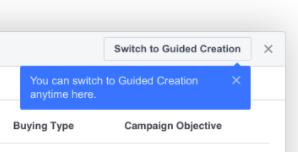 The button in the top right of the ad creation window allows advertisers to switch workflows.
The button in the top right of the ad creation window allows advertisers to switch workflows.After choosing their preferred workflows, advertisers returning to Ads Manager will be automatically opted into the workflow they chose or the workflow they previously used. However, should they change their minds, advertisers can switch to a different workflow at any time.
Three New Publishing Workflows
The new interface Ads Manager also includes two publishing workflows. With one workflow, advertisers can, within the campaign, ad set, and ad table, edit the status, name, budget, schedule, and bid and publish immediately. With the other workflow, called automatic drafts, advertisers can save their changes without applying them to their campaigns until publication. When advertisers attempt to leave the interface without reviewing and publishing their changes, they will be prompted to do so.
One Source for Reports
Before the new interface, Power Editor and Ads Manager provided different reporting capabilities, forcing advertisers to switch between tools. Now, with the new Ads Manager, advertisers can use all of the reporting tools in one place, reporting tools such as breakdowns, summary rows, date benchmarks, exported insights reports, and customized columns.
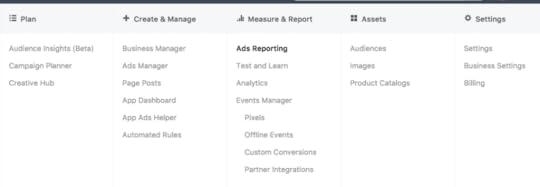 All reports are located under Ads Reporting.
All reports are located under Ads Reporting.Facebook announced the integration of Power Editor and Ads Manager on September of last year. However, Facebook didn’t announced the official launch of the new interface until today. The reason for the change, according to Facebook, is to simplify the ads managing ecosystem and to reduce the tools advertisers need to learn.
As this new interface rolls out this month, advertisers will no longer be able to access Power Editor. Advertisers can access the new Ads Manager from the Business Manager menu. This update will roll out to everyone by the end of the month.
The post Facebook’s Ads Manager and Power Editor Will Merge This Month appeared first on AdvertiseMint.
Facebook Distributes Two-Question Survey to Combat Fake News
 February 6, 2018
February 6, 2018Anna Hubbel

In the aftermath of the network’s recent announcement about reducing news sources in News Feed, Facebook is distributing a two-question survey about publishers’ trustworthiness to a new set of users every day.
The survey, according to The Washington Post, will be used by the network to determine whether publishers using Facebook are trustworthy. However, it appears that the survey is perceived skeptically by some critics who believe it can be easily manipulated or it can produce inaccurate results.
@Facebook is distributing a 2-question survey to combat #FakeNews. #newspublishers #facebooknews
Click To Tweet
Facebook’s Adam Mosseri has been addressing concerns in exchanges on Twitter. To one concerned user, Mosseri tweeted, “It’s worth noting this isn’t a rating system, nobody can opt into rating a publisher as trustworthy. We randomly sample new people each day, and only their responses are used. I’m sure some bad actors will try and game the system, but it’s not as easy as you suggest.”
To another user, Mosseri tweeted, “There is always the risk that people will try and game any system. In this case we (1) randomly sample people, (2) actively work to de-bias the data so it’s representative of the population and (3) re-run the surveys every day.”
The survey presents two questions with responses to choose from, according to BuzzFeed News:
Do you recognize the following websites?
Yes
No
How much do you trust each of these domains?
Entirely
A lot
Somewhat
Barely
Not at all
And that’s all there is to it. At this point, it’s unclear how Facebook will present the survey to users.
Facebook’s Pursuit of Trust
Other criticisms of the survey include comments that it’s too simple. Mosseri addresses this concern in another tweet.
“I understand that some people may balk at how simple a survey is, but complicated surveys can be confusing and bias signal [sic], and meaningful patterns can emerge from broad surveys.”
In addition, there is concern that survey responses will undermine well-renowned and highly-trusted news sources. Also, there is skepticism about the reasoning for the first survey question, which simply asks if the user recognizes the website.
Mosseri explains in a tweet, “It’s actually not a simple ratio of trust to familiarity. We ask people if they’re familiar with a publisher because, if they’re not, it’s not even worth asking if they trust the publisher. What we look at, and value, is how broadly trusted a publisher is.”
With over two-thirds of the US users turning to social media for at least some of their daily news, it has become overwhelming for outlets like Google or Facebook to manage the distribution of true versus false news.
In a The Washington Post article, Dean Eckles, a professor at MIT’s Sloan School of Management and former data scientist at Facebook, believes limiting the survey to only select groups of users is a safer bet for generating authentic responses.
“Survey samples are hard to game in a lot of ways because you’d need a lot of dedicated people in order to game a survey,” Eckles said in the article.
Facebook CEO Mark Zuckerberg explains how the survey works in a Facebook post:
“Here’s how this will work. As part of our ongoing quality surveys, we will now ask people whether they’re familiar with a news source and, if so, whether they trust that source. The idea is that some news organizations are only trusted by their readers or watchers, and others are broadly trusted across society even by those who don’t follow them directly. (We eliminate from the sample those who aren’t familiar with a source, so the output is a ratio of those who trust the source to those who are familiar with it.)
This update will not change the amount of news you see on Facebook. It will only shift the balance of news you see towards sources that are determined to be trusted by the community.”
Although criticisms of the survey aren’t likely to go away, Facebook is determined to pursue its goal of becoming a trustworthy platform. The network has been the focus of negativity as of late when it was discovered last year that Russian “troll farms” manipulated the platform before, during, and after the 2016 US presidential election.
Publishers may have a bumpy road ahead of them, but one thing is certain: putting out engaging news that is also truthful and accurate is more important now than ever.
The post Facebook Distributes Two-Question Survey to Combat Fake News appeared first on AdvertiseMint.
February 4, 2018
New Google Feature Allows Users to Mute Ads for 90 Days
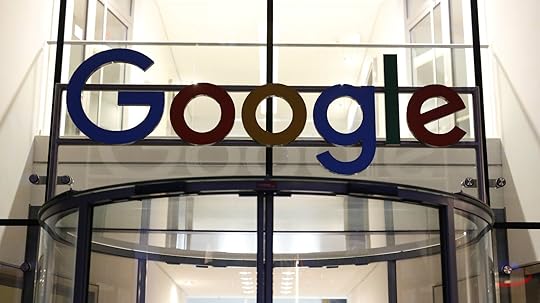 January 4, 2018
January 4, 2018Anna Hubbel
 Photo Courtesy of Quartz
Photo Courtesy of QuartzGood news for Internet users, not so much for advertisers: Google launches a new feature that mutes reminder ads. On January 25, Quartz reported the new feature, which works anywhere online where Google ad services are used.
@Google announces a new feature that allows users to mute #reminderads for 90 days. #onlineads #digitaladvertising
Click To Tweet
As frequent Internet users are aware, advertised products or services appear online multiple times. Reminder ads pop up here and there, regardless of users’ web activity at any given moment because Google’s algorithm processes their initial view of the item. As a result, like a shadow, these reminder ads follow users wherever they go for a certain amount of time. However, with this latest feature, Google is giving users a temporary break from these shadow ads. Specifically, a full 90 days, after which point reminder ads typically complete their run.
Quartz reports that the mute syncs across all devices as long as users are logged in to their Google accounts on each device. The mute feature is somewhat of a branch off of Google’s ad-muting feature originally introduced in 2012. This first feature banished ads if they were considered inappropriate or irrelevant by the user. In addition to the new mute feature, Google is also expanding the original ad-muting feature to all devices and overall making it more accessible to users.
What This Means for Advertisers
Advertisers who fear getting muted will need to make their ads attractive and relevant to users. Additionally, in cases when users do follow through with an online purchase, businesses should provide exceptional service so that users will be excited when they see reminder ads as a result of their positive experience with the business. Advertisers can also make their ads stand out by writing excellent ad copy and creating trustworthy ads.
The post New Google Feature Allows Users to Mute Ads for 90 Days appeared first on AdvertiseMint.
February 3, 2018
Facebook Gives Users More Control over Their Privacy
 February 3, 2018
February 3, 2018Anna Hubbel

Facebook recently introduced a new education campaign for users to help them better understand the network’s privacy policies and have more control over their privacy on Facebook. In addition, the network shared its guiding Privacy Principles, as well as announced its plans to make privacy settings easier for users to find.
@Facebook recently introduced a new education campaign for users to help them better understand the network's #PrivacyPrinciples and have more control over their privacy. #onlinesecurity
Click To Tweet
Educating Users
Facebook is now sharing videos in News Feed that educate users on privacy practices. For example, how to control information the network uses to show ads to the user or how to delete old posts or even an entire Facebook account. Additionally, users can take Facebook’s Privacy Checkup.
Facebook says it will refresh its privacy education campaign throughout the year, as well as make privacy tips available in ads on websites outside of the Facebook platform.
Finding Privacy Settings
Later this year, Facebook will roll out a new privacy center where users can easily view core privacy settings in one place. The network wants to provide easy accessibility for users to have a safer online experience.
Facebook’s Privacy Principles
In addition to putting together resources to help other businesses and organizations integrate their own privacy standards, such as in workshops, Facebook shared its Privacy Principles for users to have a full understanding of the network’s driving force.
User control—Facebook strives to put privacy in user control with convenient tools to make it possible.
Understanding how data is used—Making information, tools, and educational resources available to users is a top priority.
Privacy design—Facebook products are designed with privacy integrated with help from security, engineering, and design experts.
Secure information—Facebook says it works around the clock to keep user accounts safe and secure. Security is a number one priority.
Full ownership—This means Facebook makes it so users can delete their posts or even their account if they so choose. Users are in control of their own content.
Ongoing improvement—To continue improving its platform as a safe and enjoyable online experience, Facebook is always conducting research and working with experts.
Accountability—Facebook is accountable for all of its products, and therefore conducts rigorous data security testing and seeks expert feedback worldwide on all of its policies and practices.
Facebook also has principles in place to guide its advertising decisions.
The post Facebook Gives Users More Control over Their Privacy appeared first on AdvertiseMint.
Survey Finds the Top Effective Video Marketing Platforms
 February 3, 2018
February 3, 2018Jesica Schmidt
Survey finds the top effective video #marketing platforms. #videomarketing #digitalmarketing #socialmediamarketing #contentmarketing
Click To Tweet

For video marketing, it’s important to know which platform is the most effective and reliable. Wyzowl, a company that creates explainer videos, surveyed 459 marketers worldwide, finding the most effective social media for video marketing. Not surprisingly, YouTube and Facebook topped the charts as the most effective video platforms. Instagram, LinkedIn, Twitter, and Snapchat follow behind.
YouTube is the best video marketing platform. Targeting users aged 18 to 49, YouTube explainer videos were found to be 78.8 percent effective. Only 12.6 percent of the surveyed marketers don’t use the platform. Because YouTube is entirely free, offering a wide variety of videos for every user, it’s no surprise YouTube is number one on the charts.
 The results of the Wyzowl survey measuring the effectiveness of each video marketing platform.
The results of the Wyzowl survey measuring the effectiveness of each video marketing platform.Also, not surprising, Facebook ranked second for video marketing. Although Facebook explainer videos were found to be 58.5 percent effective, 32.5 percent of the respondents surveyed don’t use the video platform. Facebook’s targeted age range is users between 18 to 49 years old. Facebook, a free website and app that quickly reaches many users, was found to be a reliable marketing platform.
Other websites on the chart are Webinar, found to be 37.9 percent effective, Instagram, 32.3 percent, LinkedIn, 28.1 percent, and Twitter, 27.6 percent. The numbers continue to drop with Facebook Live, interactive video, 360-degree video, and virtual reality.
The most surprising of these statistics is Snapchat. Snapchat, at the bottom of the list, is only 3.1 percent effective in video marketing. Admittedly, 88.6 percent of the respondents in the survey do not use this platform, but that only plays a small part in the falling statistic. One reason for the high amount of respondents who don’t use Snapchat is Snapchat’s marketers, who only target smartphone users between 18 to 24 years old, are mostly in North America and Europe. On the worldwide scale, this makes up less than 36 percent of the market. Despite the small number of Snapchat marketers, Snapchat’s ad revenue is expected to increase between 2018 and 2019.
The post Survey Finds the Top Effective Video Marketing Platforms appeared first on AdvertiseMint.
February 2, 2018
Instagram Influencer Posts Doubled to 1.5 Million Worldwide in 2017
 February 3, 2018
February 3, 2018Anna Hubbel
Number of @Instagram #influencer posts doubled to 1.5 million worldwide in 2017, new data shows. #sponsoredposts #postengagement
Click To Tweet

Influencer marketing success lies in Instagram, new data suggests. According to recent findings gathered by Klear, an analytics and social media marketing platform, influencer posts doubled to more than 1.5 million worldwide in 2017. For the purpose of Klear’s study, influencer posts included the #ad or #sponsored hashtags to determine promotional or endorsement intent.
To better recognize the significance of this increase in influencer posts on Instagram, Klear also discovered that these posts generated approximately one billion “likes” globally in 2017 (about 682 per post). That means influencers are both reaching a relevant audience (developed through their following) and reaching these audiences in mass numbers. This data supports previous findings that Instagram influencers bring in the highest post engagement.
 Photo Courtesy of eMarketer
Photo Courtesy of eMarketerAge and Gender of Influencers
In addition to its findings regarding the number of influencer posts on Instagram, Klear discovered that the majority of influencers fall between the ages of 18 and 34. Further, 42 percent of this majority fell within the 18 and 24 age range.
In regards to gender, women were found to make up 84 percent of Instagram influencers. With this high percentage, it comes as no surprise that fashion and beauty brands partnered with influencers the most, making up one quarter of all sponsored posts.
Instagram’s Booming Userbase
According to Emarketer’s estimates, there will be 96.3 million US Instagram users this year. Looking forward to 2021, Emarketer expects that number to reach 118.1 million.
Putting two and two together, marketers should consider the potential reach and growth to be gained by partnering with an Instagram influencer. In addition to the networking opportunities, it’s a great tool for engaging with users who are most likely to buy a business’s products or services.
For individuals looking to generate revenue through Instagram, the opportunities as influencers are significant and promising. Individuals can learn from these 21 successful Instagram influencers for inspiration.
The post Instagram Influencer Posts Doubled to 1.5 Million Worldwide in 2017 appeared first on AdvertiseMint.
February 1, 2018
Amazon Advertising Is More Popular Than Snapchat and Twitter
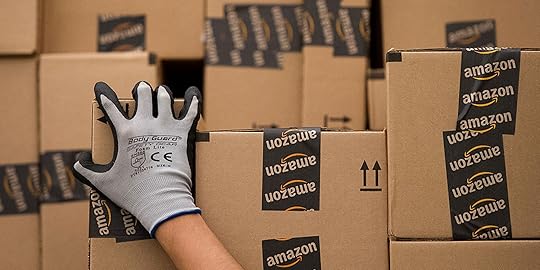 February 2, 2018
February 2, 2018Anne Felicitas
@amazon 's ad revenue is better than @snapchat & @twitter 's. #business #digitalmarketing #ecommerce
Click To Tweet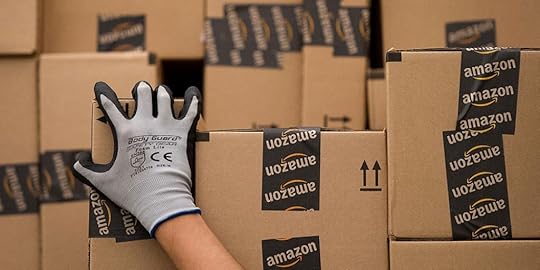 Photo courtesy of Stores.org
Photo courtesy of Stores.org
Amazon generated $2.8 billion in ad revenue, besting that of Snapchat and Twitter, the former generating $2 billion and the latter generating $800 million. Doug Anmuth, an analyst for J.P. Morgan, expects Amazon’s revenue to double to $6.6 billion.
Most of Amazon’s ad revenue is generated by ad placements within its website Amazon.com. Retailers can purchase banner ads displayed above search results, ads displayed in the search results, ads displayed as suggestions to complement a purchase, and ads displayed in third-party websites. Allegedly, Amazon is considering placing ads in Alexa and Prime Video.
Amazon’s advertising platform may be more attractive to retailers because of its users’ high purchase intent. Unlike the users visiting the platforms of Snapchat and Twitter to interact with friends and family, users visit Amazon intending to buy.
“Similar to the candy and magazine racks, which are the most valuable space in the store, Amazon is the most valuable space on the web because you are at the very bottom of the funnel,” said Scott Galloway, a marketing professor at New York University’s Stern School of Business, about Amazon advertising in an interview with Ad Age.
And, according to a survey by Bloom Reach, 55 percent of online searches for products begin and end on Amazon. That figure has grown every year and will likely continue to grow.
It seems Amazon advertising is only going to get bigger. As Amazon focuses on generating more revenue, big grocery brands and packaged-goods companies invest more money on Amazon advertising. If Amazon continues to improve year after year, it may become a threat to Google and Facebook.
The post Amazon Advertising Is More Popular Than Snapchat and Twitter appeared first on AdvertiseMint.



